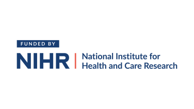Background

Antimicrobial resistance (AMR) to antibiotics is a global health security priority, particularly affecting low-income countries. Overuse and misuse of antibiotics are key drivers of AMR. Optimising antibiotic prescribing and use (ABU) is essential to ensure patients with life-threatening illnesses receive appropriate medication while reducing unnecessary prescriptions. This challenge is compounded by a lack of affordable, accurate, and rapid diagnostics to support antibiotic stewardship in local health systems.
Building on our health systems research with partners in Uganda, Malawi, and Zambia, Opt-AMR research group aims to interrupt AMR in communities by identifying factors that optimise ABU and developing affordable strategies with Ministries of Health. We seek to understand how quality of care (QoC) and ABU among patients with febrile illness can be strengthened to reduce AMR and improve patient outcomes. We will focus on facilities where clinicians have limited time for therapeutic decision-making, and AMR emergence indicates failed health system quality.
The most common clinical presentation in sub-Saharan Africa is febrile illness in under-fives, often treated with broad-spectrum antibiotics when malaria tests are negative. This behaviour risks spreading AMR, exacerbated by incomplete adherence to therapy, supply ruptures, and other QoC deficiencies. While microbiological surveillance is recommended, it is costly and logistically challenging. A feasible approach is sentinel surveillance of key pathogens to identify regional AMR prevalence and develop local solutions.
Aim
To develop a metric and evidence-use process to improve local management of childhood febrile illness.
Objectives
Develop a rapid, recurrent surveillance system of ABU and AMR prevalence.
- Investigate associations of QoC in health facilities with AMR to key antibiotics.
- Investigate community ABU and AMR drivers focusing on febrile illnesses.
- Assess AMR risk development by analysing genomic traits from samples.
Methods
- Adapt Lot Quality Assurance Sampling (LQAS) to investigate ABU as a local AMR driver and QoC of febrile children.
- Conduct microbiological surveillance of AMR prevalence and genetic analysis of resistance.
- Assess community behaviours and perceptions about antibiotic use using surveys and ethnographies.
- Produce evidence-based quality improvement strategies to reduce AMR using community dialogues and stakeholder engagement
Funded by

Partners

